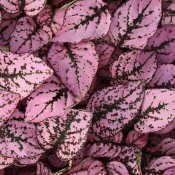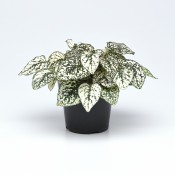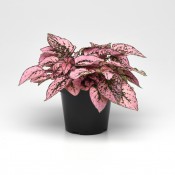(pol·kuh dɒt plaant) (hi·po·es’·tez)
- T&T Polka Dot Plant Pink
- T&T Polka Dot Plant White
Hypoestes phyllostachya
The Polka dot plant, also known as Hypoestes phyllostachya, is a delightful and vibrant plant that adds a playful touch to any space. With its distinctive foliage characterized by splashes of bright colours, including pink, red, and white dots or splotches on a green background, this plant instantly catches the eye. Native to Madagascar, these plants are grown for their beautiful and colourful foliage rather than their flowers. While Polka Dot plants do produce small flowers, some gardeners choose to remove them. This is because the flowers can be somewhat insignificant and may detract from the attractive foliage.
Its compact size makes it perfect for various indoor settings, such as tabletops, shelves or window sills. The Polka dot plant thrives in moderate light conditions, preferring bright indirect sunlight but tolerating lower-light environments too. Proper watering is crucial for its well-being; it requires consistently moist soil while avoiding waterlogging. The surface of the soil should not be allowed to dry out completely. This attractive plant appreciates warmth with temperatures between 60-80°F (15-27°C). Pinching tips or pruning can help maintain its bushy appearance and encourage new growth. With its beautiful colouring and ease of care, the Polka dot plant is an excellent choice for both experienced gardeners and beginners looking to add some whimsical charm to their living spaces.
Varieties Listing
Hypoestes phyllostachya This compact series of Polka Dot plants has distinctive pink and green variegated leaves. Pinch tips to promote bushiness. Heat and shade tolerant, they do best in average to evenly moist soil, but will not tolerate standing water as it will lead to root rot. The surface of the soil should not be… Read more »
Hypoestes phyllostachya This compact series of Polka Dot plants has attractive pointy leaves which are white in colour with distinctive dark green spots. Heat and shade tolerant, they do best in average to evenly moist soil, but will not tolerate standing water as it will lead to root rot. The surface of the soil… Read more »
Back to Garden Collection.



